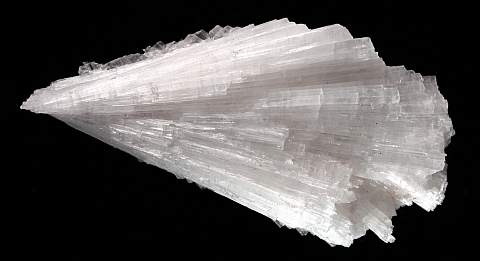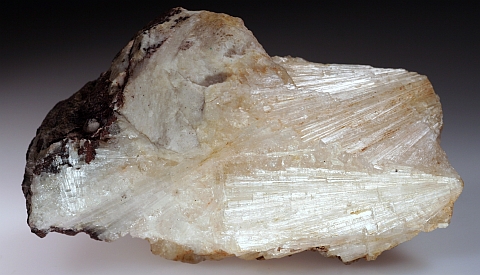| Definition | History | Zeolite-species | Morphology | Occurrences | Literature |
| Links | Exchange | Sales | Photography | Impressum | Home |
Natural
Zeolites -
Morphology of Thomsonite-Ca
| Introduction | History | Varieties | Occurrences | Epitaxies | References |
Introduction Thomsonite,
a
member of the zeolite group is, for collectors, remarkable in several
respects. Mainly in its diversity in appearance which
coincides with a variability, mostly in the framework Si/Al ratio and
the related analytical results. Because of this, mineralogists in the
first part of the 19th
century, when identification was based primarily on morphology and
gravimetric chemical analysis, classified the varieties of thomsonite
as several different species and a number of different names were
used. The most common are "thomsonite" (Brooke,
1820) for
the long, prismatic, very seldom terminated variety from
Dumbartonshire, Scotland; "comptonite" (Brewster,
1821
for the blocky, well formed crystals from Vesuvius, Italy and
"mesole" (Berzelius,
1822). Mesole
was later renamed "faröelite" (Heddle,
1853) for
the silica rich, mostly hemispherical or botryoidal form, common on the Faroe islands. The identification of thomsonite by
chemical analysis is complicated by the fact that it often occurs as
mixtures with other fibrous zeolites, mainly Mesolite and Natrolite,
including epitaxial overgrowths on natrolite.
From the middle of the 19th century most mineralogists considered "thomsonite", "comptonite" and "farölite" as varieties of the same mineral, but the description of new "species" continued. After almost a century of discussion Hey, in his Studies on Zeolites (Hey, 1932), summarised the older work on thomsonite and added many new data, including the first lattice measurements by x-ray diffraction by Bannister. Hey's paper (of 74 pages), with its 103 locations and the comments on the different varieties, is a treasure for collectors. Hey investigated the properties of thomsonite and found that there is no easy cation exchange as with other zeolites. Additionally, the refractive indices of thomsonite vary considerably, falling as the Si/A/ ratio increases. The correlation of Si/Al content and thomsonite morphology was further investigated in detail by Wise & Tschernich, (1978) using new electron microprobe methods. Their new data correlate well with those given by Hey (1932). Wise & Tschernich reported that the compositional range of thomsonite varies from a Si/Al ratio of 1:1, for the larger well developed blocky crystals, to a ratio of 1.1 to 1.2 for the bladed crystals and up to 1.3 for the botryoidal aggregates, in which the crystals are often only a few micrometers in size. |
|
Berzelius,
J. 1822. On the Chemical Composition of some Minerals of the Zeolite
Family; with an Account of two new Substances, Mesole and Mesoline.
Edinburgh Phil. Journ. 7, 1-11 Brewster, D. 1821. Account of comptonite, a new mineral from Vesuvius. Edinburgh Phil. Jour., 4, 131-133. Brooke, H.J. 1820. On mesotype, needlestone, and thomsonite. Annals of Philosophy 16, 193-194. Heddle, [M.F.] 1857. On Mesolite and Faröelite (Mesole). Phil. Mag., ser. 4, 13, 50-55 Hey, M.H. 1932. Studies on the zeolites. Part II. Thomsonite (including faroelite) and gonnardite. Mineral. Mag. 23, 51-125. Wise, W.S. and Tschernich, R.W. 1978. Habits, crystal forms, and composition of thomsonite. Can. Mineral. 16, 487-493. |
| Thomsonite-Ca from Scotland | |
 |
 |
| Thomsonite -Ca, Loanhead Quarry,Beith, Strathclyde, Scotland. 65x30 mm | Thomsonite-Ca, Old Kilpatrick, Strathclyde (Dunbartonshire), Scotland, UK. 70x40 mm |
© 2010 by Volker Betz , all rights reserved